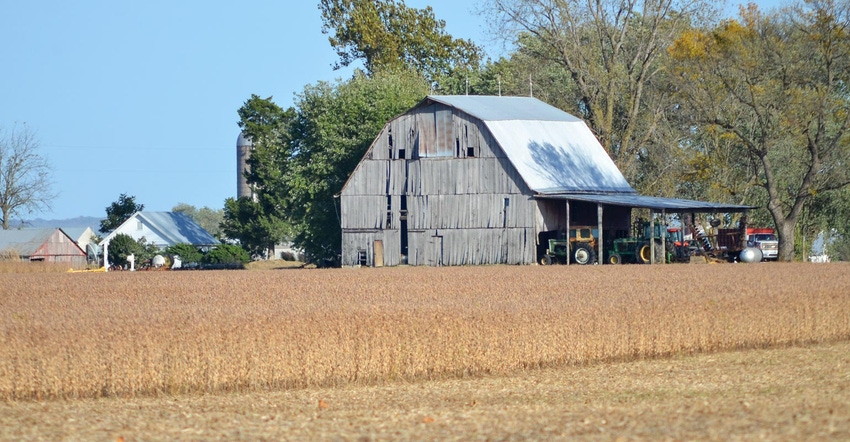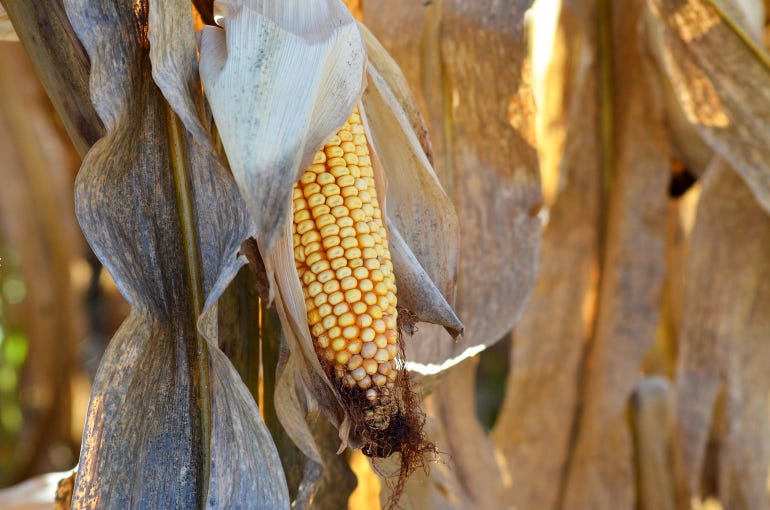
Exports are key for U.S. soybean and corn farmers in 2021.
Rabo AgriFinance offered its short-term outlook for these two crops during a September webinar. Company analysts say exports are on track to reach record-high levels, and no surprise, China is a key buyer for both corn and soybeans.
Support for soybeans
Soybean basis levels are up compared to last year. “We are having a recovery in the meal prospects, but this is also being driven by relatively strong demand for soybeans, both domestically and from an export perspective,” says Erin FitzPatrick Nazetta. grains and oilseed analyst at Rabo AgriFinance.
Rabobank looked at soybean crush volumes by month from the beginning of this year. “We've been pushing a very high level of soybean crush volumes, much higher than the last year and two years previous to that,” she says.
And while FitzPatrick Nazetta doesn’t see huge crush margins, they are positive. As a result, there still is strong demand for soybean crush domestically, which is supporting margins.
However, for FitzPatrick Nazetta, the big story on soybeans has been strong export demand. And that demand is being significantly driven by China's buying of soybeans.
“China has switched their buying from South America, and they've been strong buyers of U.S. soybeans,” she explains. “South America had a very big crop last year. They exported significant volumes. Some will say they probably oversold, and now they're short domestically on the supply.”
This leaves an opportunity open for U.S. soybean producers. Now, U.S. farmers have become a key soybean supplier in the China market.
Availability of soybeans will be key to filling demand. Uncertainty currently surrounds the size of the U.S. and South American soybean crop.
However, FitzPatrick Nazetta says don’t count out South America. “Going forward, when we look at these higher price levels, the way the market is structured and the very strong U.S. dollar,” she adds, “this is going to incentivize South America to produce a large soybean crop.”

EXPORTS OVER ETHANOL: The export market will find a home for corn displaced by a downturn in domestic demand for ethanol. Analysts say the nation is not likely to reach the USDA ethanol use mark of 5 billion bushels.

So far in South America, it's still early in its planting season, but the weather, price and currency levels are favorable.
“Soybeans are buying more acreage in South America, particularly Brazil, as a result of what we've seen,” FitzPatrick Nazetta explains. “We still need to bridge the gap. We need to harvest the U.S. soybean crop. We need to put these large volumes that are on the books on the river and through the ports.”
While there are risks with weather and logistics, FitzPatrick Nazetta still believes the scenario is shaping up to “primarily benefit U.S. soybean exports” this season.
Comeback for corn
When it comes to the short-term outlook for corn, Stephen Nicholson, Rabo AgriFinance senior grains and oilseeds analyst, says the focus is on China.
When looking at the combined U.S. exports of corn, wheat, soybeans, sorghum and dried distillers grain to China, the 2016-17 crop year was a high watermark. It has been downhill since then.
“But if you focus on what's happening here in 2021, and we looked at outstanding sales to China, plus what's been shipped, you do see a nice increase in soybeans, and you do see a huge increase in corn,” Nicholson says. “And that's really where the story is in corn.”
He says there is a potential to export a little more than 9 million metric tons to China in 2021. “That would be the highest ever,” he explains. “The second highest was back in 1995-96, which was about 5.5 million metric tons. So, a big, big change there.”
Rabobank has people located throughout the world monitoring grain markets. In Shanghai, those analysts say China needs corn, and there is potential for a corn deficit.
“There is a lot of chatter right now about what was happening in northeast China with the typhoons,” Nicholson says. In these discussions, people are pointing to the country losing 5% of its crop. That is going to tighten up the world supply and demand on corn, which will once again benefit U.S. corn farmers.
“We are going to see more corn going to China,” Nicholson adds.
China trade deal out of reach?
The Phase 1 agreement had China buying about $36.5 billion of U.S. agricultural products and commodities in 2020.
Through July, they are about 23.5% to that goal, Nicholson says, so there is a long way to go. But don’t count out the fourth quarter.
When looking at the history of fourth-quarter grain movement, he says, that is when buying really kicks into high gear. Nicholson adds that China has needs it must fulfill.
“I do think it's going to be a challenge to reach that goal before it's all said and done,” he says, “but [China] appears to be wanting to reach that goal and fulfill that promise.”
Hill to climb for ethanol
The USDA use number for ethanol is close to 5 billion bushels. But when Nicholson looks at that number, compared to what has happened last year and this year, he thinks it is a reach.
Last year, he notes, there was about 104 million bushels per week of ethanol use. “And right now, we're running about 90% of that,” Nicholson says. “You're under 5-billion-bushel carryout, or a 5-billion-bushel use for ethanol.”
He sees the ethanol use number coming down moving forward. That will help build stocks or at least get offset by the increase in exports. But he doesn’t see a boost to price in this market.
So, the short-term outlook for corn and soybeans remains focused on export markets to prop up downturns in certain domestic markets.
About the Author(s)
You May Also Like






